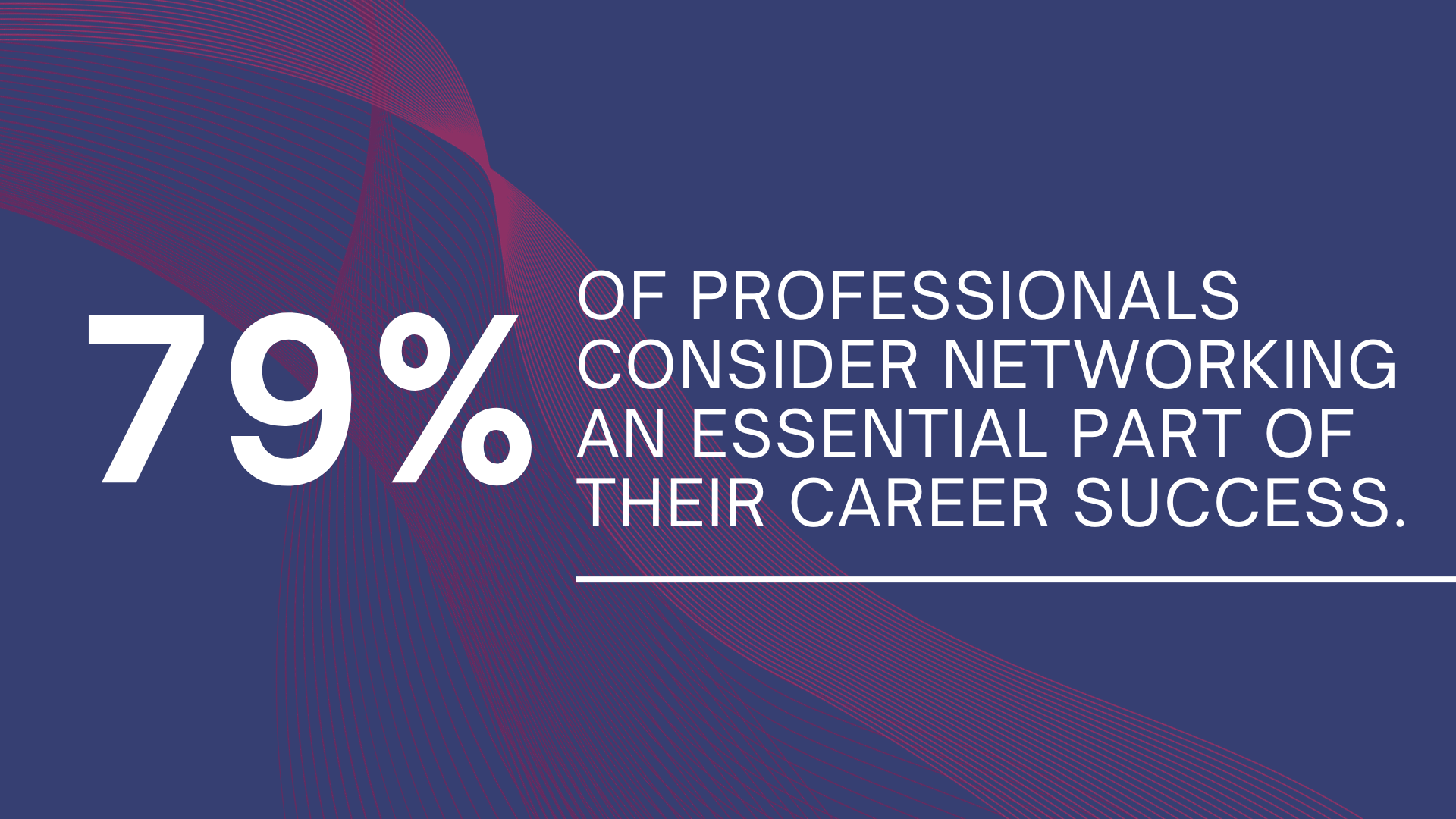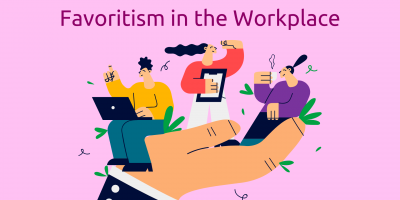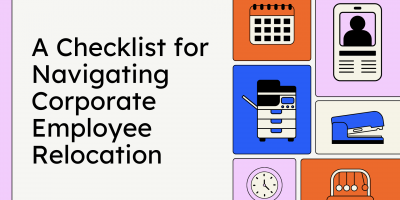
What do Employee Background Checks Look for?
Unveil the role of employee background checks in the hiring process and their importance in creating a safe work environment.


COO at Precondo

Founder & CEO of Champion Leadership Group

Co-Founder & CEO of OSHA Outreach Courses

Editor Manager at Biz Report

HR specialist and the Managing Director of First Aid Course Leicester

Staff Writer & Senior Coach at Total Shape

Career Consultant and Business Coach at Reflections Career Coaching

PR Professional at Crafty Insights
A study by LinkedIn reveals that 79% of professionals consider networking an essential part of their career success. Another 70% were hired within a company where they already had a connection.
In a world that thrives on connections, networking has proven to be a valuable asset for career growth and development.
But before the virtual meetings and the conferences, before exchanging business cards and LinkedIn connections, its origins can be traced back to the Industrial Revolution, when, in fact, many aspects of modern networking emerged.
The fast transition and colossal upsurge of businesses imposed the need for better connections and collaboration.
Consequently, trust played a significant role, and things like personal integrity, how one would dress, their network of associates, or affiliation with clubs and institutions became more important than a person’s political or religious associations.
However, the term itself didn’t appear until the late 1970s and early 1980s.
While, to this day, there are still traces of its early days overlapping with the principles of modern networking, the process itself keeps evolving, creating a need to stay current.
Weighing in the latest workplace trends, the influence of COVID-19 and post-pandemic changes, and the growing use of technology, this Shorltister article offers the latest networking tips, highlighting the importance of staying current in the knowledge economy.

Many associate the process of networking with the pursuit of connections for personal benefit. While this is an aspect called transactional networking, it doesn’t fully capture the power of knowledge sharing in mutually beneficial relations.
“Networking is about building relationships, not just closing deals,” says Samantha Odo, COO at Precondo. She further advises avoiding being overly self-promotional and focusing on the value one can offer others.
But, building and maintaining this genuine connection requires a strategic approach and a specific skill set.
When done right, it comes with access to new opportunities and collaborations for those who want to move up the career ladder, whether for a higher salary or a promotion. It’s also a helpful medium for businesses looking for new clients and hiring teams searching for the right culture fit.
For example, for Jeff Mains, founder and CEO of Champion Leadership Group, purpose-driven networking is a vital strategy.
He explains: “As a five-time entrepreneur with over two decades of experience in the industry, I understand the importance of effective networking in today’s business landscape.
Purpose-driven networking is an important networking strategy.
In an age where authenticity and purpose are highly valued, successful networking will require a focus on building genuine and mutually beneficial relationships.”
To network effectively requires putting in the effort and time, exchanging value, and offering authenticity and character, not only skills and titles. To better understand what this means, let’s explore some of the best and most useful practices.

Beyond the fundamentals and the big “dos and don’ts,” some of the best practices in networking lie in making small gestures, restoring dormant ties, or asking the right questions. In fact, statistics show that looks and handshakes influenced 72% of participants in networking events.
Whether it’s a confident stance, smiling, and being authentic, these timeless tactics help individuals stand out and create meaningful connections, irrespective of the end goal.
Networking begins before attending an event or pursuing an opportunity.
In fact, it requires careful preparation and establishing clear objectives ahead of time. Anything from finding a job and candidate leads to seeking advice or identifying potential collaborators requires at least some degree of composition
Thus, in this phase, it’s essential to:
A well-executed preparation phase sets up the active engagement process.
This happens during a networking opportunity, for example, a conference or a local event.
Some of the best practices in networking during this stage are:
Networking doesn’t end after exchanging contact with the desired prospects. Instead, it continues well after the engagement phase and into relationship building and maintenance.
Thus, timely follow-up is crucial.
Keeping the dialogue alive can be as simple as sending a message or an email to express gratitude. Referencing a specific point from your discussion also demonstrates attentiveness and genuine interest.
While the length of the follow-up stage differs, when done correctly, this entire process can set anyone up for success, solidifying and expanding professional relationships and opportunities for learning and growth.
A strong network delivers a significant professional advantage.
Between this and referrals, that meant new career opportunities for job seekers. According to a Jobvite Recruiter Nation study, 46% used friends to discover job openings, 39% utilized social media, and 25% used professional connections.
The takeaway from the study was for companies and hiring managers not to overlook the importance of the right strategies, technologies, and processes in attracting talent.
But networking is fluid.
What might’ve worked in the past or does now may not next year.
Technological advancements, globalization, and the rise of social media platforms have transformed how we make professional and business connections, and they still do. For example, LinkedIn networking skyrocketed in the past decade, boasting over one billion members, 150 applications sent per second, and six people hired every minute.
Now, a new platform has entered the networking landscape, Clubhouse, which has over ten million weekly active users.
Pushing these changes even further, the COVID-19 pandemic created a need to explore other ways to network effectively, shifting from in-person to online to a hybrid approach.
As we transition beyond the pandemic, networking mirrors the evolving job market, raising the question of how to adapt one’s approach to align most effectively with these ongoing changes.
The following networking tips help individuals and businesses form stronger connections amid the shifting workplace landscape.

Networking exceeded physical boundaries even before the pandemic.
However, the shift to remote and hybrid workplaces and the rise of gig-based opportunities presented the need to align networking with modern trends. Thus, digital networking has taken the stage, and its importance will likely continue in the upcoming years.
One study by Forbes exploring the use of virtual meetings and conferences as a substitute for in-person contact reveals that the greatest benefits of digital networking are:
As a significant part of digital networking, platforms like LinkedIn or specialized industry forums effectively connect professionals and communities globally.
With the rise of AI technology, it’s also likely for networking to progress in this direction.
In fact, Farhan Siraj, Co-Founder and CEO at OSHA Outreach Courses, states that in the coming years, it will be crucial to how one leverages AI for networking.
“There is already a plethora of tools that promise to connect professionals through specialized algorithms. However, there are some extremely below-average tools in the market.
To utilize AI effectively, you must first learn to separate the wheat from the chaff.
After this, you must learn to approach those you have found through AI. This is where your cold networking skills will be crucial. You must respect the boundaries and preferences of potential connections and work towards steadily building a relationship,” says Siraj.
Finally, another aspect worth exploring, according to Young Pham, Editor Manager at Biz Report, is the metaverse.
Pham explains: “The digital realm continues to expand, with the emergence of the metaverse presenting a novel and exciting dimension for networking.
In 2024, professionals should consider joining digital forums, including those within the metaverse, where like-minded individuals congregate.
These platforms facilitate seamless interaction, information exchange, and collaboration across geographical boundaries.
As the metaverse gains momentum, being an early adopter can provide a competitive edge in expanding your network.“
Step one of traditional and digital networking is building a polished professional identity.
While anyone can have an online presence, not everyone successfully builds a brand name for themselves. The key is consistency and aligning the goals with how a person presents themselves online. Anything from the type of pictures they use, their network, and information on the internet to their unique experiences, strengths, and skills can be used as an indicator.
With a stronger brand, one becomes easily identifiable in-person and online, and the networking opportunities get much broader.
The essence of networking is to expand one’s circle, make connections, and build relationships. However, many tend to overlook people who are not within their immediate industry.
Yet, inclusivity in networking can be very valuable.
“The future of networking lies in our ability to build extensive networks while fostering genuine and meaningful connections within these communities,” explains Sarah Jeffries, HR specialist and Managing Director of First Aid Course Leicester.
“In our fast-paced and interconnected world, social communities have become valuable hubs for innovation, collaboration, and knowledge sharing.
Professionals and businesses that can effectively utilize these online spaces will position themselves at the forefront of industry trends, gaining valuable insights and transformative ideas”, adds Jeffries.
While some could benefit more from a niche approach, expanding one’s network beyond this offers different perspectives, knowledge, and support that may not be achievable with a limited circle. It means having a more extensive support system, often leading to new and unexplored opportunities.

Mastering conversational skills might be the most challenging way to network, especially if we weigh in social anxiety, introverted personalities, or fear of public speaking.
While general advice would be to listen with the intent to understand instead of replying, maintain eye contact, and use body language to convey the message, it all falls short with online communication.
It’s an entirely different skill set.
For example, according to LinkedIn statistics, for 35% of respondents, a casual conversation on the platform led them to a new opportunity. Moreover, 25% of professionals established new business partnerships, while 61% agreed regular online interactions can lead to job opportunities.
However, although LinkedIn allows for a more laid-back approach, other channels, for example, emails or video calls, might require a more formal conversation.
Still, even if you nail down the tone, online conversations fail to transmit the layered richness of in-person interactions. Thus, they sometimes require more effort to attract someone’s attention and establish a strong connection.
With that in mind, some networking tips when it comes to mastering the art of online conversations include:

Offering value first could be one of the most crucial networking tips for the upcoming year. With an influx of “experts,” “professionals,” and “specialists” on the job market, it has become somewhat challenging to distinguish between quality and a job title.
Thus, offering value beyond this, without expecting immediate returns, can make a person stand out. Often, this would lead to others reciprocating to the same extent.
The reciprocity principle is a fundamental aspect of social psychology loosely defined as an equal value exchange.
In this case, the reciprocity principle acknowledges networking as a two-way exchange. When individuals selflessly provide value and assistance to others within their network, they foster a culture of mutual support and collaboration, increasing networking value and leading to long-lasting, mutually beneficial relationships within their professional circles.
Traditional face-to-face networking will never go out of style.
However, its digital form offers incredible convenience and efficiency. Since both have significant advantages, hybrid networking emerged naturally in the past few years.
“Balancing online networking with in-person interactions is key,” says Benedict Ang, Staff Writer and Senior Coach.
“While digital connections offer convenience, don’t underestimate the power of face-to-face meetings.
Hybrid networking is the future, so allocating time for both is essential,” explains Ang.
Samantha Odo agrees with this sentiment, adding her point of view.
“Striking a balance between online and in-person interactions is an art,” says Odo.
“Use online platforms for initial introductions, follow-ups, and relationship maintenance. In-person meetings create lasting impressions, so reserve them for essential connections or special occasions.
Remember, a thoughtful email after a meeting can reinforce the connection made in person“.
First impressions make all the difference in networking, but don’t underestimate second ones.
Assuming an individual stands out during an in-person networking event, simple internet research is all it takes to change someone’s opinion. In the case of digital networking, this is even more true since it’s the first thing external connections see.
Subject matter expert Emily Maguire, a Career Consultant and Business Coach at Reflections Career Coaching, says that social profiles on platforms such as Facebook, LinkedIn, and others play a crucial role in building identity, reputation, and authenticity.
“Connection requests are accepted or declined based on what others see on your profiles.
Therefore, take your time and curate strong social profiles that support your goals and targeted networking audience.
Additionally, it’s vital to post regularly and focus on building stronger relationships. You can do this by reposting posts and sending personal emails on special occasions such as birthdays, promotions, etc.
Doing this fosters trust and familiarity, leading to more interactions and increased potential for reposting and recommending your content to a broader network,” explains Maguire.
Consequently, everyone should be mindful of creating and maintaining a consistent positive online image. That means aligning goals with what one presents publicly.
Since online reputation management can be tricky, it has prompted the use of career assessment tools and coaching to ensure a person’s digital presence matches and conveys their right career aspirations.
While expanding one’s circle and building connections worldwide is something to keep in mind for the upcoming year, it doesn’t negate the importance of niche communities.
Although they’re much smaller, the networking opportunities are endless.
Niche communities offer specialized knowledge and connections that broader networking events can’t replace. Thus, seeking out such forums, events, platforms, or even social media groups can provide much-needed industry insights and high-quality connections.
In the ’90s, senior editor at Vanity Fair, Michael Caruso, had difficulty pinning down the magazine’s editor-in-chief to pitch his story ideas. Due to the editor’s limited time, Caruso would use the little free time she had during elevator rides to do so, conceiving the concept of an “elevator pitch.”
This is just one of the origin stories behind this buzzword, but it perfectly illustrates its significance.
By definition, the 30-second elevator pitch is a sales strategy where one makes a short speech on an idea, product, or company to sell it.
As such, many use it in professional networking.
In this case, the pitch is a quick synopsis of a person’s background, personal experiences, and career goals formulated to make a lasting impression.
Preparing a 30-second elevator pitch is a one-time thing that can be used in all future networking opportunities. It should be brief, captivating, and offer some form of value to the recipient.
One final networking tip is understanding that this is a constantly evolving process. What is popular now might not be in a couple of years. Or, what works for someone might not work for others.
Thus, it’s essential to continuously adapt to these changes and measure where professional or business networking can be improved.
While these ten networking tips reflect the current business landscape and could be applicable the following year, it’s crucial to recognize that this dynamic skill requires staying current to achieve maximum efficiency.
With an innately evolving nature, networking requires constantly adapting to technological, workplace, and societal changes.
Anything short of this could lead to overlooked opportunities, lost connections, and an overall poor impact on professional growth.
“Networking in 2025 is all about adapting to the evolving landscape,” says Loren Quimbo, PR Professional at Crafty Insights.
Quimbo adds: “It’s not just about collecting business cards anymore. Paramount skills will include digital fluency, embracing emerging technologies, and staying updated on industry trends.“
Ultimately, beyond the insights of the latest networking tips, learning how to connect with people and always staying current with emerging trends and digital advancements is what good networking is all about.
Content Writer at Shortlister
Browse our curated list of vendors to find the best solution for your needs.
Subscribe to our newsletter for the latest trends, expert tips, and workplace insights!

Unveil the role of employee background checks in the hiring process and their importance in creating a safe work environment.

Favoritism in the workplace often operates quietly, shaping decisions and relationships in ways that can undermine fairness and trust. How can companies address this challenge before it creates a toxic workplace and stunts organizational growth?

Streamline your corporate employee relocation with an in-depth checklist for effortless navigation through relocation services.

Beyond holiday festivities and annual performances, here’s why December’s focus should be about celebrating human rights in the workplace.
Used by most of the top employee benefits consultants in the US, Shortlister is where you can find, research and select HR and benefits vendors for your clients.
Shortlister helps you reach your ideal prospects. Claim your free account to control your message and receive employer, consultant and health plan leads.